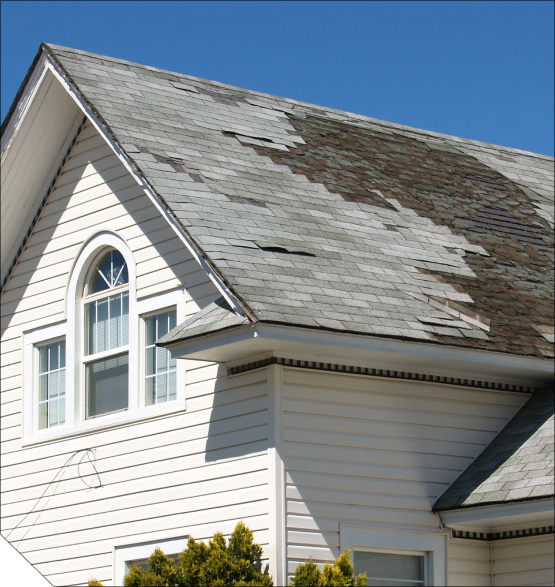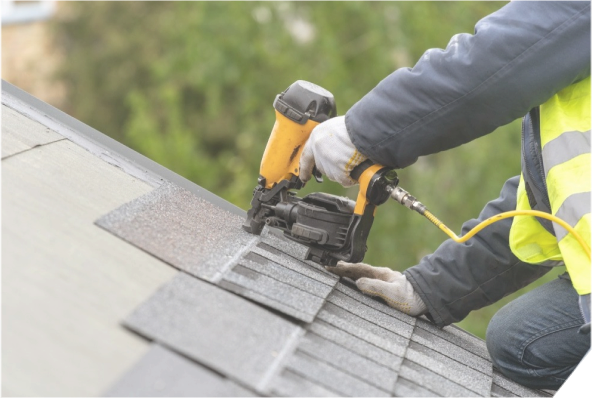Storms can be unpredictable and unforgiving, leaving homeowners with extensive roof damage that demands immediate attention. Whether it’s strong winds ripping off shingles, hail causing structural dents, or heavy rain leading to leaks, storm-related roof damage can escalate quickly. Without prompt action, minor issues can turn into costly repairs or even complete roof replacement.
If you’ve recently experienced a severe storm, knowing the right steps to take can save you time, money, and stress. Acting swiftly can help prevent further damage to your home’s structure and protect your family from potential hazards. By following a clear plan, you can navigate the insurance process, find a trusted roofing contractor, and ensure your home is restored as soon as possible.
This guide will walk you through the essential steps of handling storm damage, from assessing the situation to selecting a roofing services provider for emergency repairs or a full roof replacement. Whether you’re dealing with minor leaks or significant destruction, understanding what to do next will put you in control of the situation.

Step 1: Assess the Damage – Identifying the Signs of Trouble
When a storm passes, the first step is to evaluate your roof for any visible signs of damage. While some issues, like missing shingles, may be obvious from the ground, other forms of damage can be more subtle. Walk around your property and look for debris, fallen tree branches, or other indicators that your roof may have been compromised. If safe, use binoculars to inspect your roof for visible problems without climbing onto it.
One of the most common signs of storm damage is missing or curled shingles. High winds can lift shingles or tear them off completely, leaving your roof vulnerable to leaks. Additionally, hail can cause dents, cracks, or granule loss, weakening the shingles’ protective layer. Over time, exposed areas can deteriorate further, leading to more significant issues.
Leaks are another major concern after a storm. If you notice water stains on your ceiling, damp spots in the attic, or peeling paint on interior walls, it’s a clear sign that water is seeping through. Even small leaks can lead to mold growth, rotting wood, and structural damage if left untreated. Acting fast can prevent a minor repair from turning into a full roof replacement.
Flashing, which seals the joints and edges of your roof, can also suffer during severe storms. If flashing around your chimney, vents, or skylights is bent, cracked, or missing, water can easily infiltrate these vulnerable areas. Checking for damaged flashing can help you pinpoint potential problem spots before they escalate.
If you’re unsure about the extent of the damage, contact a professional roofing contractor for an inspection. An expert will provide a thorough assessment, identifying hidden issues that may not be visible to the untrained eye. Early detection and professional evaluation can make all the difference in determining whether you need simple repairs or a complete roof replacement.
Step 2: Prevent Further Damage – Taking Immediate Action
Once you’ve identified roof damage, the next step is to prevent it from worsening. Even if a professional roofing contractor can’t arrive immediately, there are temporary measures you can take to protect your home from further exposure to the elements. Quick action can save you thousands in additional repairs and keep your living space safe.
One of the best temporary solutions is tarping your roof. Using a heavy-duty tarp can help shield exposed areas and prevent water from seeping in. Secure the tarp with nails, screws, or adhesive to ensure it stays in place during wind and rain. However, if your roof has extensive structural damage, avoid climbing on it yourself—safety should always come first.
Clearing debris from your roof and gutters is another crucial step. Leaves, branches, and other storm debris can block drainage, leading to standing water and leaks. If you can safely remove debris from the ground or with a long-handled tool, do so. Keeping gutters clear will help direct rainwater away from your home, minimizing further issues.
Inside your home, check for signs of moisture damage in the attic and ceilings. If you spot water intrusion, place buckets or containers to catch dripping water and move furniture or valuables away from affected areas. This can help prevent further interior damage while you wait for professional repairs.
Ultimately, the goal is to stabilize the situation until a roofing contractor can assess the full extent of the damage. By taking these immediate precautions, you can prevent a minor problem from escalating into a major, costly disaster.

Step 3: Contact Your Insurance Company – Navigating the Claims Process
Dealing with insurance after storm damage can be overwhelming, but it’s a necessary step to cover repair or roof replacement costs. The key to a smooth claims process is documenting everything and following the right procedures to ensure you receive the maximum coverage available under your policy.
Start by taking clear photos and videos of all visible damage. Capture images of missing shingles, dents from hail, interior water stains, and any structural damage. The more evidence you provide, the stronger your claim will be. If possible, include before-and-after pictures to show the impact of the storm.
Next, review your homeowner’s insurance policy to understand what’s covered. Some policies include full replacement costs, while others cover only a portion of the repairs. Pay attention to deductibles, exclusions, and any specific requirements for filing a claim. If you’re uncertain, call your insurance provider for clarification.
Once you’ve gathered documentation, contact your insurance company to initiate the claim. They will likely send an adjuster to inspect the damage and determine the payout. It’s helpful to have your roofing contractor present during the inspection to ensure all issues are properly assessed and nothing is overlooked.
Avoid common pitfalls, such as accepting a low initial settlement without consulting your roofing contractor. Insurance companies may try to minimize costs, so having a professional advocate for necessary repairs or a full roof replacement is crucial. If needed, you can negotiate or appeal their decision with additional evidence.
By staying organized and proactive, you can maximize your claim and get the financial assistance needed to restore your home efficiently.
Frequently Asked Questions About Storm Damage Roof Replacements
1. How long does an emergency roof replacement take?
It depends on the extent of the damage, but most roof replacements can be completed within 1-3 days once scheduled. Emergency repairs may be done sooner to prevent further damage.
2. Will my homeowner’s insurance cover the full cost of a roof replacement?
Coverage varies by policy. Some insurance plans cover full replacement costs, while others only cover partial repairs. Check with your provider for details.
3. Can I wait to replace my roof if the damage seems minor?
Delaying a necessary roof replacement can lead to more severe issues, including leaks, mold, and structural damage. It’s best to address problems as soon as possible.
4. How do I choose a reliable roofing contractor?
Look for licensed, insured, and experienced contractors who specialize in storm damage repairs. Avoid “storm chasers” who may offer low-quality work with no warranties.
5. What type of roofing materials are best for storm-prone areas?
Impact-resistant shingles, metal roofing, and synthetic materials designed to withstand wind and hail are great options for storm-prone regions.

Let Gormley Construction Help Restore Your Roof
Storm damage can be stressful, but knowing what steps to take can make all the difference in protecting your home and finances. By assessing the damage, preventing further issues, filing an insurance claim properly, and choosing a reputable roofing contractor, you can get your home back in shape without unnecessary delays.
If you need professional roofing services, Gormley Construction is here to help. Our expert team specializes in emergency roof replacements, storm damage repairs, and high-quality roofing solutions tailored to your needs. We work closely with homeowners to ensure a smooth, stress-free process from start to finish.
Don’t wait until minor storm damage turns into a costly disaster. Contact Gormley Construction today for a professional roof inspection and get your home back to its best condition!
